News
They Surrounded the White Tents Presentation on the Wagon Box Fight
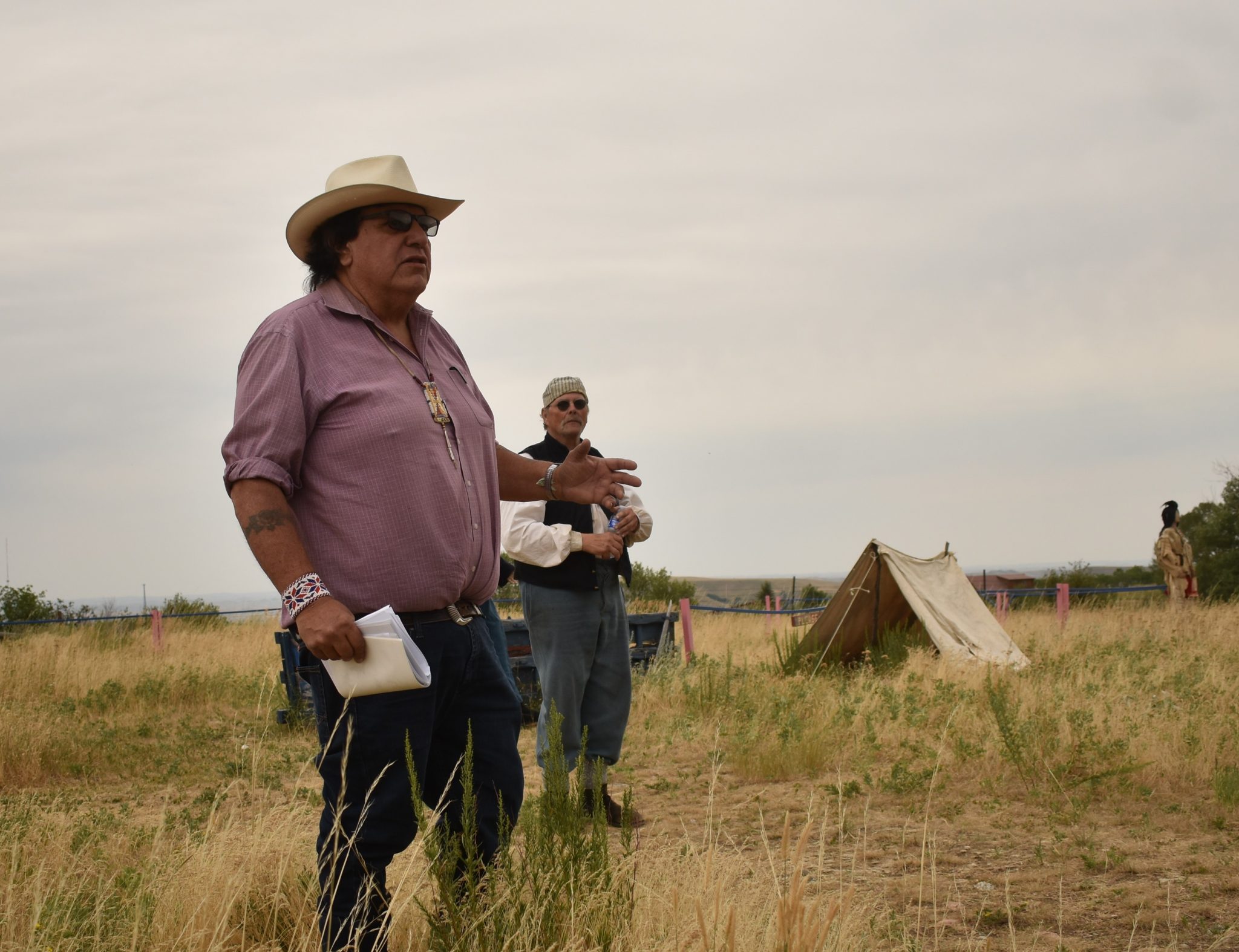

Published
2 years agoon
By
cvannoy
Donovin Sprague and Bob Wilson
On Tuesday, August 2nd, Bob Wilson, Sheridan historian, and Donovin Sprague, Miniconjou Lakota historian and author, hosted a program to celebrate the 155-year anniversary of the Wagon Box Fight. The fight occurred on August 2, 1867, near Story. It was the last major battle between the U.S. Army and Lakota warriors along the Bozeman Trail.
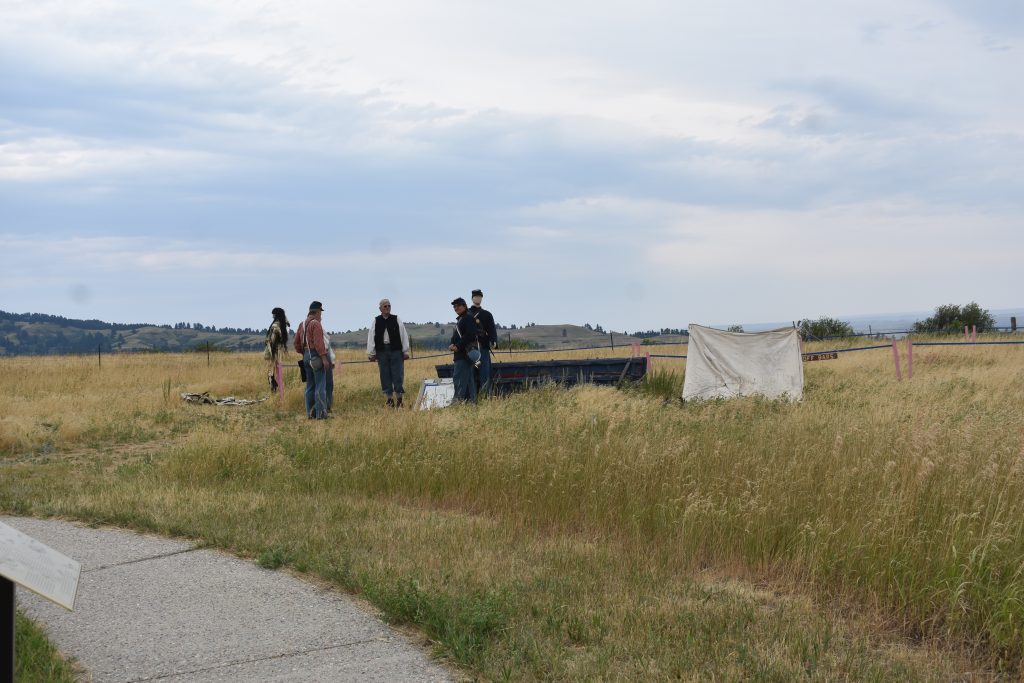
It was a warm, cloudy, windy day on the high bluff, and around 30 people attended.
Wilson spoke on the battle from the army’s point of view, talking about how they cut and hauled the wood to the fort, and the fact that one of their wood cutter camps was on the bluff where the program took place.
He said that there were 54 men with the wood cutting crew and the men were camped out in pup tents on the high bluff about five miles from Fort Phil Kearny. They had a coffee pot over the fire, but during the battle it was shot full of holes.
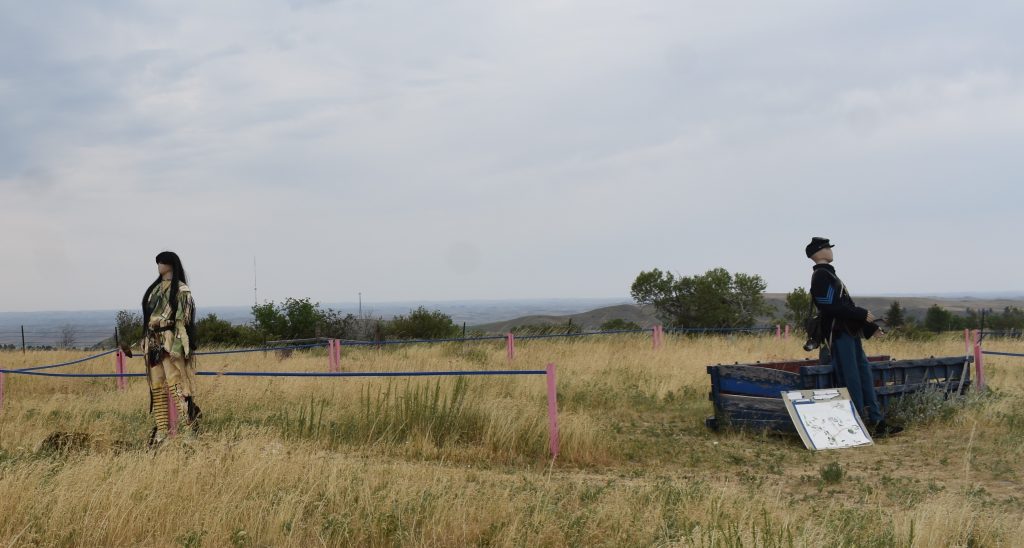
When the Sioux attacked, the soldiers and civilians made a breastwork of the wagon boxes for protection. Wilson said there are only three of the original wagons left. The Native American’s were used to the army using muskets.
At this fight many of the soldiers were shooting new breech-loading rifles instead of the muzzleloaders, and it did not take them near as long to reload.
Although the new rifles, Springfield Model 1866 and lever action Henry rifles, had cartridges instead of a musket ball, they did still use the black power so there was a lot of smoke from the firing.
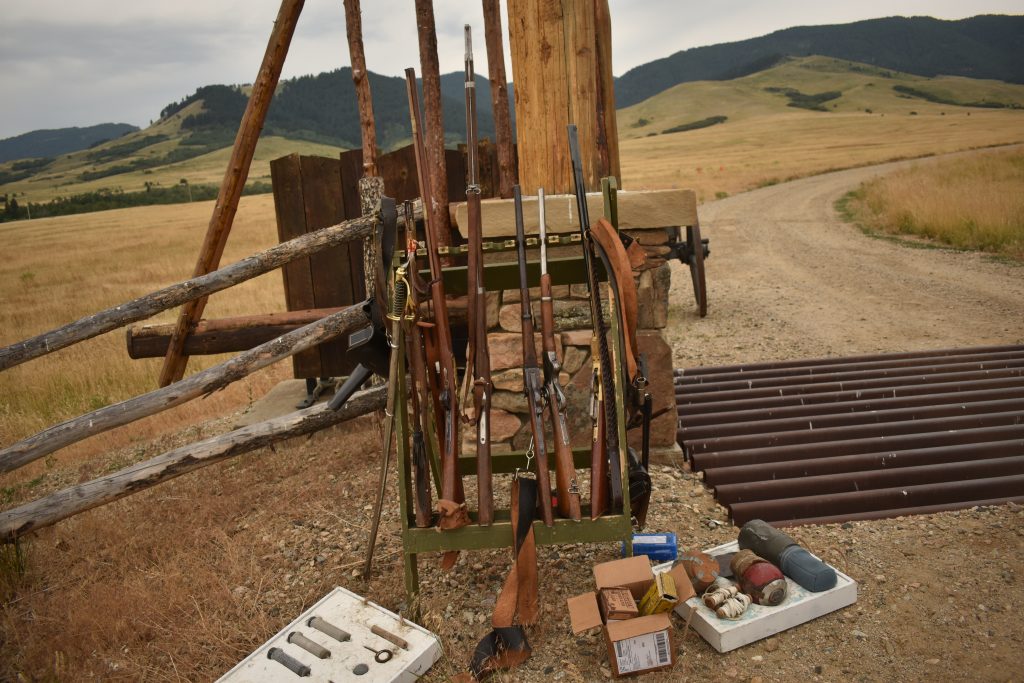
A lookout near the fort could see the powder smoke, and knew there was a battle in progress. He notified the rest of the garrison and they rode to help the beleaguered wood train. Major Benjamin Smith left the fort with around 100 soldiers, and they brought a mountain howitzer, and that ended the fight.
The soldiers were given a shot of whiskey to calm their nerves, and then they returned to the fort. Additional civilian survivors had hidden in a nearby draw and made their way back to the fort after dark.
Wilson said only six men from the wood cutting train were killed, and he added that the number of Indians has been exaggerated, and instead of 2000 as is stated in some accounts, it was closer to 800.
Donovin Sprague took the stage to talk about the Indian’s side of the fight that they named, “They Surrounded the White Tents,” referring to the pup tents, and it is recorded on a winter count buckskin.
The winter court buckskins were a way of commemorating the important events in Lakota history, and one important event was the fight near what is now Story.
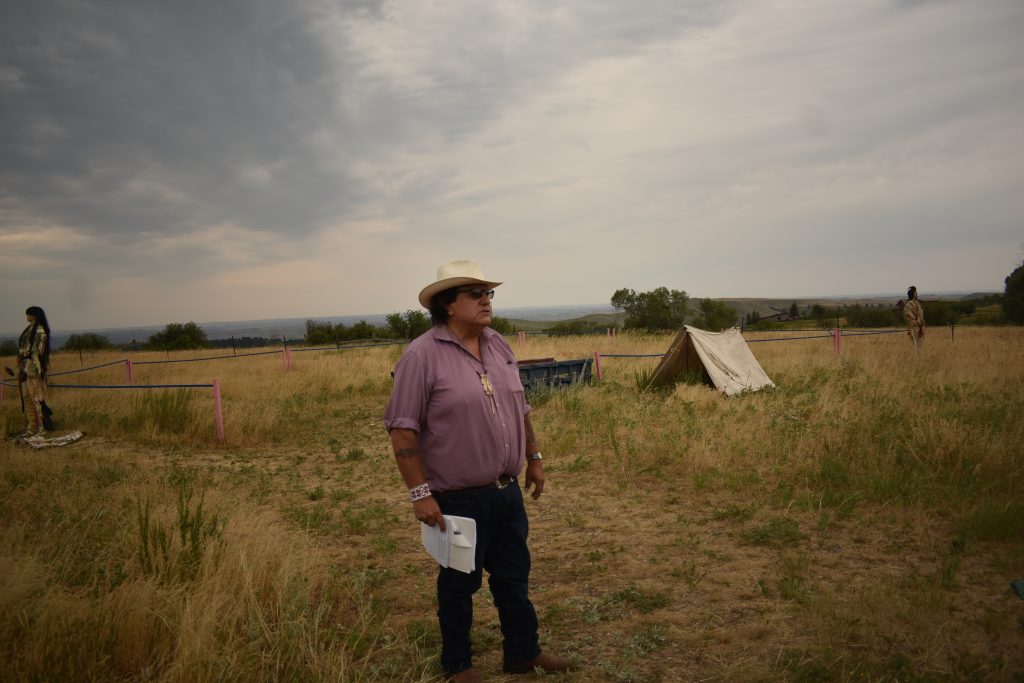
Sprague also told the story about his ancestor “Hump” or “High Back Bone” who fought at the Wagon Box Fight.
He mentioned that much of his family history is right in this area. He talked about how much land the Lakota once claimed.
He said the Crow would come down as far as the Missouri River and harass the Sioux, stealing horses and taking some of the ladies as well, and he added that the Sioux had to return the favor.
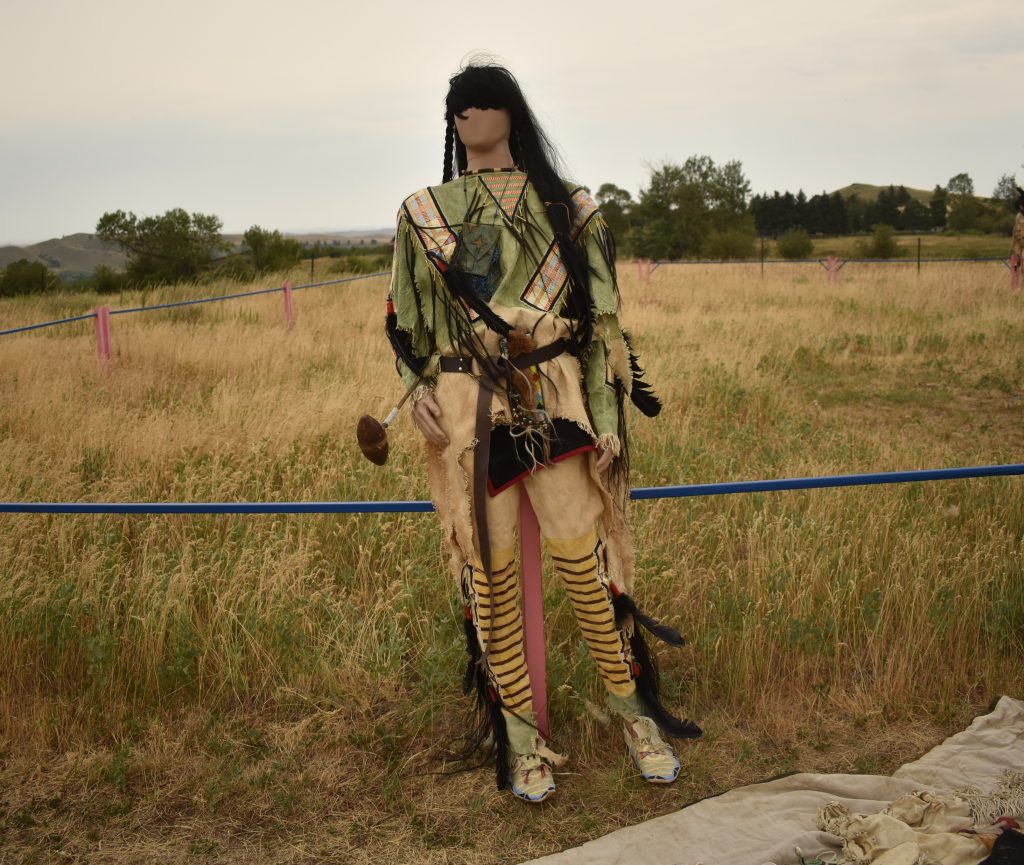
He also said that a lot of Sioux warfare was a way to perform. He talked about the strategies the Indians used, such as decoys to divide the enemy troops.
He said that the Wagon Box Fight and the Hayfields Fight near Fort C.F. Smith in Montana were coordinated to strike at the soldiers along the Bozeman at about the same time. The Hayfields Fight was August 1.
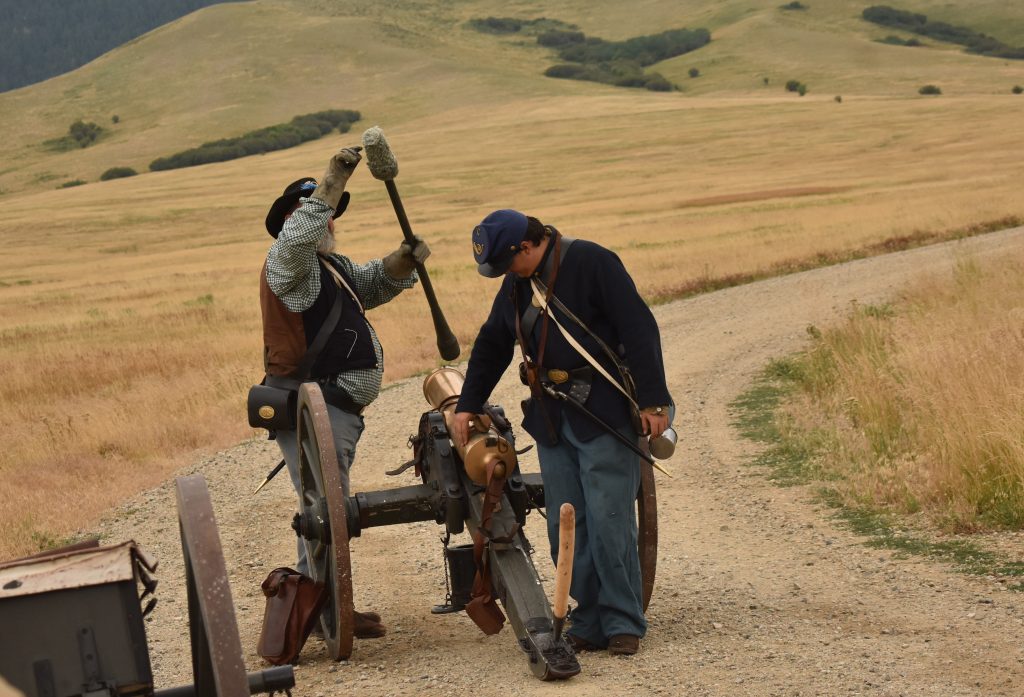
After the presentations, the Fort Phil Kearny Regulars gave a weapons demonstration with some of the weaponry from the battle era, including the firing of the mountain howitzer.
The Wagon Box Fight occurred 155 years ago this month near Story, Wyoming. For more on the Wagon Box Fight, see this week’s history story on Saturday morning on Sheridanmedia.com.
